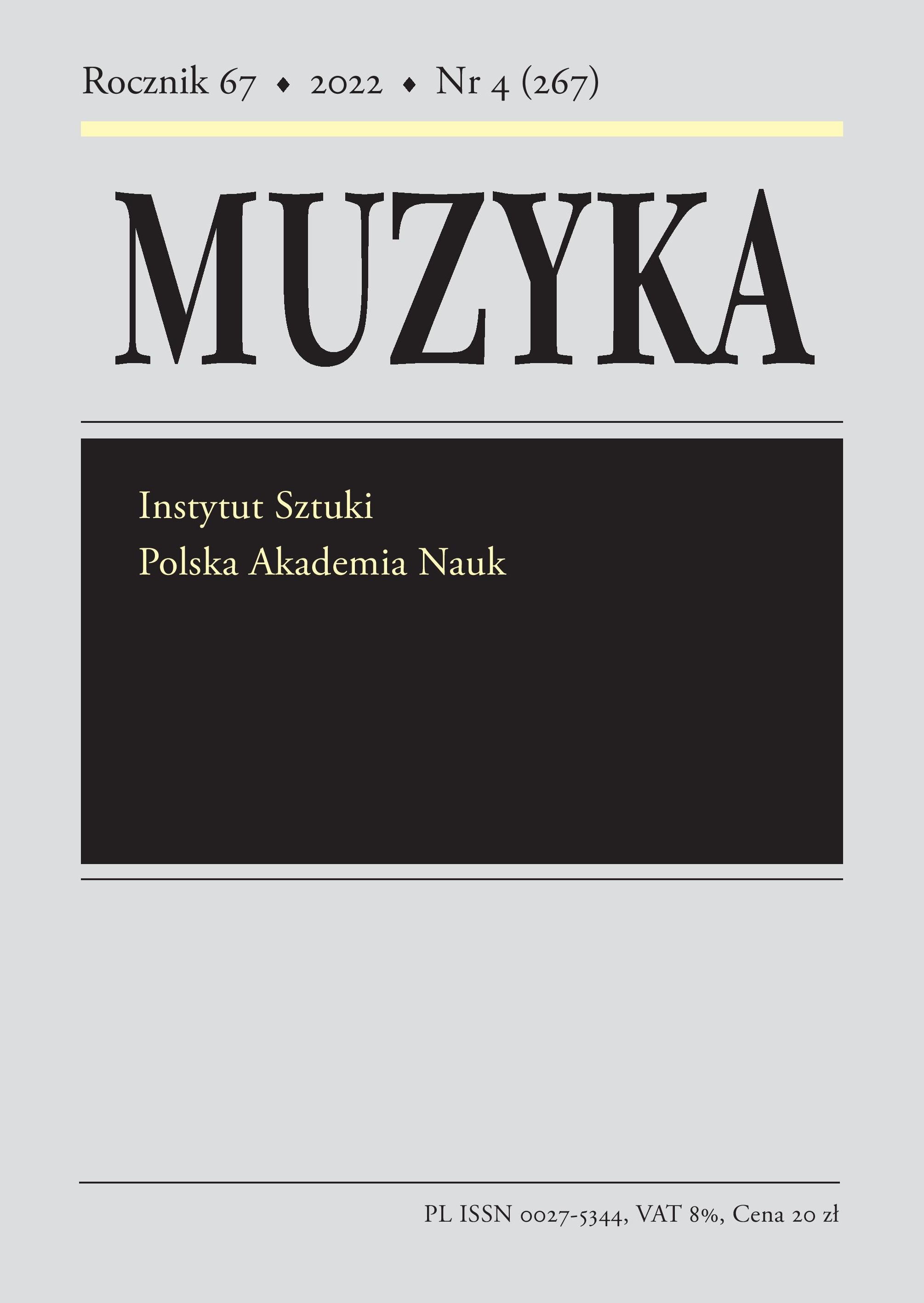Przyczynki do działalności i twórczości muzyków związanych z dworem królewskim Rzeczpospolitej w drugiej połowie XVI wieku
A Contribution to the Study of the Work and Output of Musicians Active at the Royal Court of the Polish-Lithuanian Commonwealth in the Second Half of the Sixteenth Century
Author(s): Marcin SzelestSubject(s): Music
Published by: Instytut Sztuki Polskiej Akademii Nauk
Keywords: Marcin Leopolita; Francesco Maffon; Jakub Sowa; Łowicz Tablature; ‘Castle’ Tablature; King Sigismund II Augustus’ ensemble; King Stephen Báthory’s ensemble
Summary/Abstract: This article presents new findings concerning the work and output of three musicians active at the Polish-Lithuanian royal court in the second half of the sixteenth century: Marcin Leopolita, Francesco Maffon and Jakub Sowa. According to a biographical note by Szymon Starowolski (‘Scriptorum Polonicorum Hekatontas’, 1625), Leopolita’s main achievement as a composer was a set of polyphonic liturgical works based on Gregorian chant, for performance throughout the liturgical year. The manuscript of this collection was kept at the Załuski Library until its confiscation in 1794; its title was listed by Jan Daniel Janocki in a catalogue of selected library cimelia published in 1752. The title informs us that the collection was produced at the behest of King Sigismund II Augustus (most likely in 1560–61, when Leopolita was employed at the court as ‘compositor cantus’) and that its composer was the court organist. Since no detailed description of the manuscript is available and its provenance cannot be established, we cannot say whether it came from that king’s library or was a later copy and consequently whether the note concerning Leopolita’s position as organist, not confirmed in the royal court records, is fully credible. A manuscript comprising introits for the entire liturgical year written by Leopolita, Blasius Amon and other composers is also listed in an inventory of music prints and manuscripts belonging to the Kraków Franciscans (1596–98). The three five-part motets by Leopolita found in the Łowicz Tablature and the so-called ‘Castle’ (Poliński) Tablature were most likely part of the collection in question. Meanwhile, an organ tablature from St Elisabeth’s church in Wrocław, compiled by Georg Gotthart, organist of that church in 1568–85, includes a previously unnoticed instrumental piece by Leopolita titled ‘Paduana Leopolithanowa’ (Staatsbibliothek zu Berlin – Preußischer Kulturbesitz, Slg Bohn Ms. mus. 357, fols. 66v–67r). The earliest mention of Francesco Maffon’s presence in the Polish-Lithuanian Commonwealth can be found in the book of entail of the court of King Stephen Báthory, where an entry for 13 May 1576 lists the members of a newly formed royal ensemble. Both of the in strumental works by this composer known to date – a composition preserved in the form of part-books kept at Oxford’s Christ Church Library (Mus. 372–376) and a lute fantasia printed in Jean-Baptiste Bésard’s collection ‘Thesaurus harmonicus’ (1603) – also survive in versions for keyboard instrument, written without attribution in a manuscript produced probably in the Habsburg court circle in the 1620s/30s (Vienna, Zentralbibliothek der österreichischen Minoritenprovinz, XIV.714). The same source also includes a number of other compositions linked to the Polish-Lithuanian music culture, some of them yet to be researched. Like Maffon, Jakub Sowa is first mentioned in the royal court records in connection with the founding of Báthory’s ensemble. Jerzy Gołos hypothesised (despite a lack of information in those records) that Jakub Sowa was probably an organist, the composer of works signed with the monogram ‘JS’ in the Łowicz Tablature, and also that manuscript’s scribe. Gołos quoted a note from 1571, found in the revenue and expense ledger for the construction of a ship commissioned by King Sigismund II Augustus, concerning one ‘Jakub the Organist’. Contrary to Gołos’s opinion, however, this cannot refer to Sowa. The identity of ‘JS’ and the relations between the Łowicz Tablature and Báthory’s ensemble thus remain an open question requiring further research.
Journal: Muzyka
- Issue Year: 67/2022
- Issue No: 4
- Page Range: 81-115
- Page Count: 35
- Language: Polish

